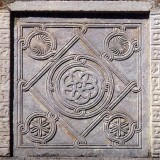This thesis looks deeper into the chronicle of the huge expansion of monasticism at Pelion. It also notes the impact of this elation of religiousness to the wider area. From the last decades of the 10th century there was observed a rather strange phenomenon at the area of Thessaly and more specifically at Pelion. Even the though the area never seized of being under foreign attacks, it seems to have prosperity. This phenomenon of prosperity goes along with huge growth of religious feelings among the local populations. Even though, at the time, there were not such formations as known villages on the mountain there started to appear many monasteries and churches. Till the end of the 14th century the mountain of Pelion had acquired the prominence as if a second Holy Mountain (Agio Oros). Evidence show that it was called the island of cells at the time. While following the course of monasteries at Pelion, it is observed that the creation of the first villages was influenced by this intense religious growth. Besides the theoretical part of this research, there was conducted a detailed observation of the architectural principles and designs. By visiting all the monasteries of Pelion there was done a categorization, so that their course in time was better understood.
